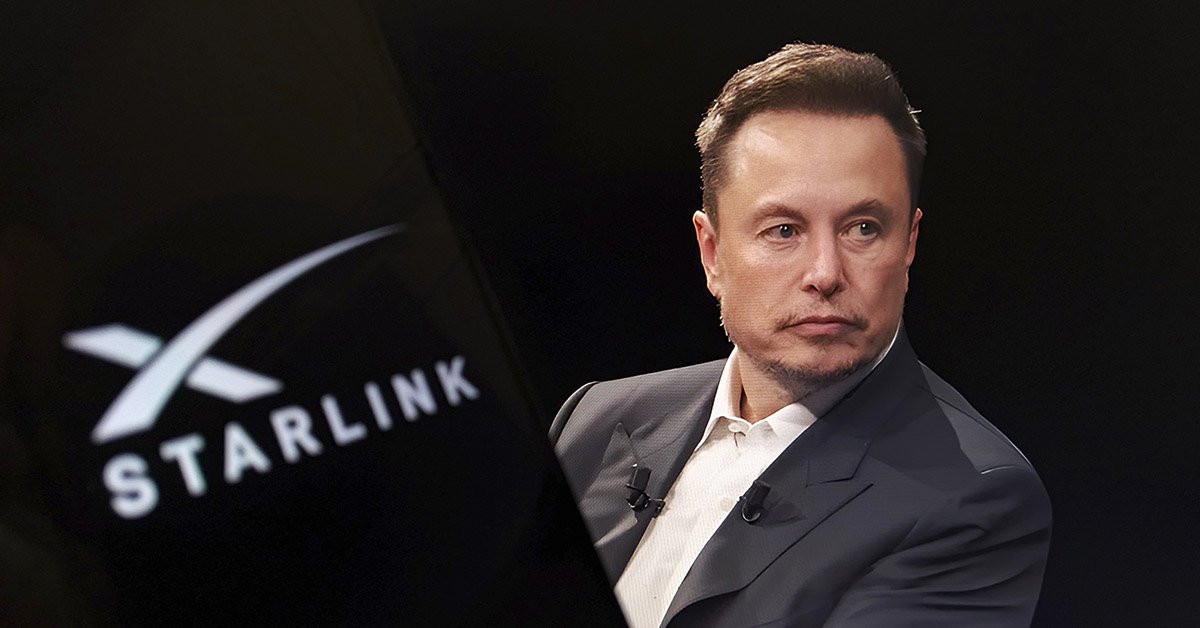Objectively it seems like Elon Musk is having a terrible year. From having a public, online fallout on his platform X with President Trump to his controversial behavior in public, Musk’s hubris seems to be catching up to him. Many critics say Musk’s fallout with Trump began after the administration cut federal EV funding as part of Trump’s “Big Beautiful Bill”. Now, Musk is once again under scrutiny for 1 of his ventures, Starlink, Musk’s ambitious project to connect the world to the internet.
The Cracks in Musk’s Space Ambitions

Elon Musk has constructed his façade on promises of revolutionary technological change. Starlink is an ambitious project proposed to be a solution to internet access to even the most remote places in the world. However, this project requires a tremendous number of low Earth orbit (LEO) satellites to achieve this connection. These satellites also have a 5-year lifespan of operation and once they have expired, will fall back down to the ground.
While SpaceX’s satellites may connect the globe, they create astronomical pollution and financial losses that threaten SpaceX itself. The dream of connecting the world from space quickly evolved into a nightmarish reality full of streaks, debts, and political turmoil.
Starlink’s Real Purpose

According to financial analysts, Starlink exists for 1 sole reason: to justify Starship’s existence. Musk’s Mars rocket needs massive commercial launch demand to make it a financially viable venture. With only 150 launch customers globally, most needing less than 1 launch annually, creating artificial demand was essential. Starlink, in essence, was never really about global internet connectivity but a siphoning pit required to keep the Starship program alive while generating the billions needed for Mars colonization.
Financial Promises vs. Harsh Realities
Despite Musk’s claims of Starlink’s profitability, Starlink’s finances are kept obscured. Bloomberg reports revealed that Musk had “rigged the numbers,” and that Starlink was losing hundreds of dollars on each ground terminal shipped. Reports from Bloomberg and the Wall Street Journal confirm SpaceX runs unconventional accounting, obscuring whether Starlink has ever been profitable. The financial model looks shaky as satellite maintenance is costly. Recent Dutch financial filings show Starlink generated only $2.7 billion in 2024 revenue with just $72.7 million in profit. Despite Starlink providing wireless internet connectivity to more than 2.6 million customers, Starlink is currently hemorrhaging money.
The Political Backlash Against Musk’s Tech
Elon Musk’s stint in the Trump administration, establishing D.O.G.E., along with his political antics, has damaged his reputation. Governments across the globe have begun rejecting Starlink due to Musk’s political weaponization of his companies. All major US airlines rejected Starlink as an in-inflight internet service provider just last year. Due to Musk’s ties to the US tariffs, Ontario canceled a $100 million Starlink contract.
Italy’s $1.6 billion military contract faces opposition citing national security risks. Mexican telecoms pulled $7 billion in potential contracts after Musk’s political attacks towards the company’s magnate Carlos Slim. Musk has also been accused of trying to circumvent the Brazilian government’s ban on Twitter / X using Starlink to leverage his political motives. He also threatened to disable Starlink in Ukraine, which is a service critical to their army. Musk’s tendency to weaponize his companies politically has started driving customers straight into the arms of competitors like Europe’s Eutelsat system.
Read More: Inside Elon Musk’s Most Controversial Moments
The Environmental Time Bomb in the Sky
In 2024, farmers in Saskatchewan, Canada found satellite fragments scattered across their fields, with one family collecting a laptop-sized panel among their lentil crop. This issue is now a global problem with debris having been reported in Poland, Kenya, North Carolina, and Algeria. With Starlink’s satellite count growing, the likelihood of more objects falling into populated or agricultural areas rises significantly.
Starlink plans to launch 42,000 satellites with 5-year operational lifespans. When they expire, these satellites will re-enter the atmosphere creating a significant pollution problem. When these satellites re-enter the atmosphere, they release toxic aluminum oxides that deplete the ozone layer. Scientists found that satellite reentries increased aluminum oxide particles in the atmosphere by 29.5% in just 2022. By 2030, metal vapor from dying satellites could exceed natural levels by 646%. Starlink is not only seemingly an economic blood clot hemorrhaging billions, but a severe threat to the environment.
Space Junk and Kessler Syndrome
Starlink operates the densest satellite constellation ever deployed, reporting collision avoidance maneuvers every 2 minutes in late 2024. While Starlink has an impressive track record of avoiding collisions, any event like a solar flare, or system hack could raise the risk of collision. As orbital traffic begins becoming congested and reaches dangerous levels, scientists warn of Kessler Syndrome. This is a theoretical runaway chain reaction of collisions that prevent the use of affected orbits for decades due to debris. NASA already issued warnings about rising debris density in low Earth orbit. The sky is crowded, and Starlink is cramming in satellites at a reckless pace that tempts disaster.
Starlink’s Broken Promise of Connecting the World
Although Musk made promises that Starlink would bring connectivity across the most remote places in the world, Starlink primarily serves wealthy Western nations. About 98% of all Starlink’s clientele base is concentrated in North America and Europe. Countries like India have blocked Starlink entirely, while South Africa’s expansion stalled over due to conflicts with Musk and the country. The $600 initial cost and $110 monthly fee exclude most developing nations Musk claimed to serve.
The Empire May Collapse Under Its Own Weight
It seems like the lights are going dim on Elon’s empire. Tesla might have been Musk’s “Kessler Syndrome” moment, causing a chain reaction of collisions, ultimately causing its downfall. Many Americans and people around the world made calls for a boycott of Tesla over Musk’s political extremism. SpaceX struggles with the astronomical costs of Musk’s attempts to colonise Mars.
Financial analysts estimate Musk needs $5-10 trillion to fund his Martian terraforming mission. As government contracts disappear, Musk’s dreams of Mars colonisation seem increasingly unlikely. As Starlink and Tesla fall into a dire financial crisis, it is a possibility that this could take down SpaceX with it. With added pressure from political and environmental backlash, Starlink’s likely downfall does not just threaten its ambitions of space internet. It also threatens the very foundation of Elon Musk’s empire.
Read More: Elon Musk to Revive Long-Dead App and Restore Its Lost Video

